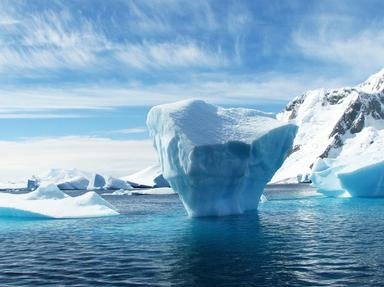Quiz Answer Key and Fun Facts
1. Which strait, lying between Baffin Island and Greenland, is known as Iceberg Alley?
2. Which lake, found in the Northwest Territories of Canada, is the deepest lake in North America?
3. Which major river in Canada was originally called "Disappointment River"?
4. Eggers Island, whose native name is Itilleq, is an uninhabited island whose southernmost point is Cape Farewell. The island is the property of which of the following?
5. This Greenland town's name translates to "great plain" and was settled in 1941 when an American Air Force Base was built here.
6. In 2007 a previously unknown island was uncovered off the coast of Greenland as a glacier retreated inland. What is the English translation of this island's name?
7. If you were visiting an archipelago comprised of eighteen islands located between Iceland and Norway, where would you be?
8. What is the northernmost region of Finland, which extends into the Arctic Circle, also known as?
9. The Isle of Grimsey in the North Atlantic Ocean belongs to which country?
10. The "Tunguska Event" was a 1908 explosion estimated to be 1,000 times more powerful than the bomb dropped on Hiroshima. Where in the world did this occur?
Source: Author
BxBarracuda
This quiz was reviewed by FunTrivia editor
spanishliz before going online.
Any errors found in FunTrivia content are routinely corrected through our feedback system.

